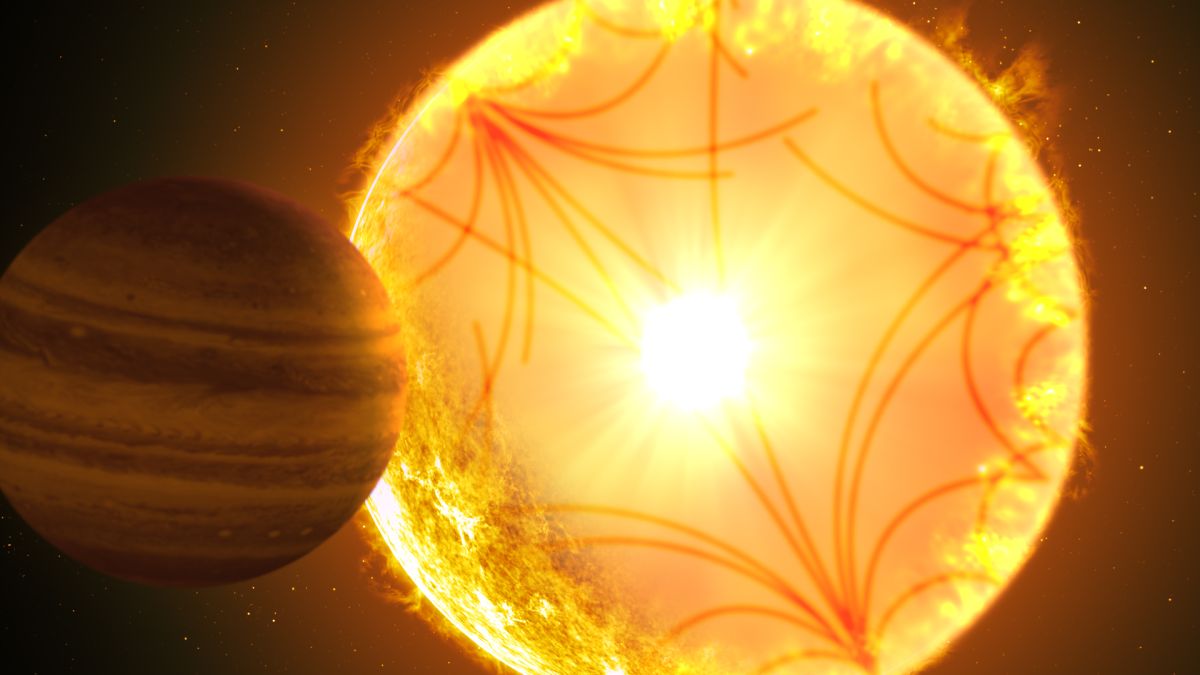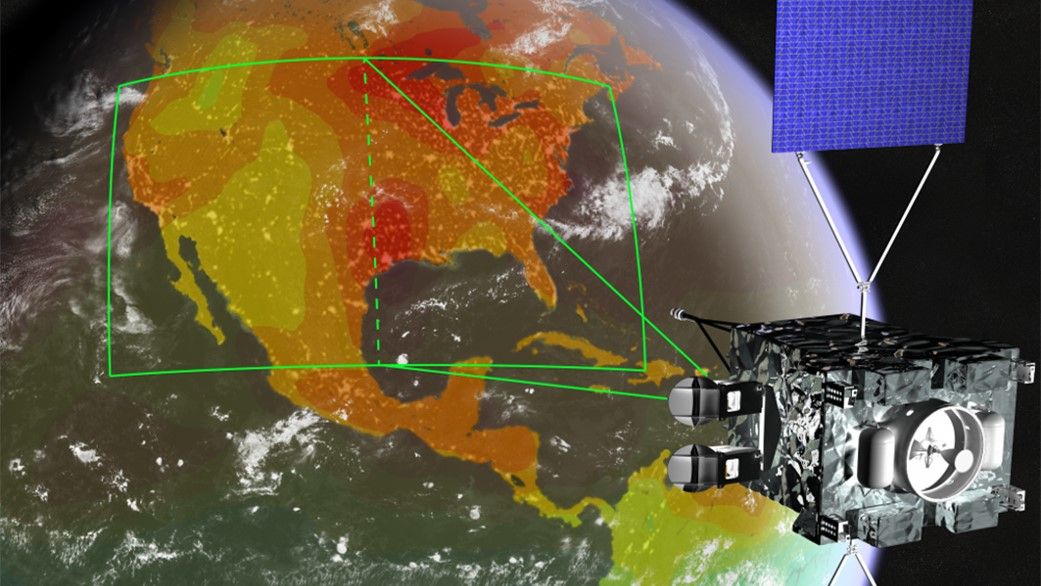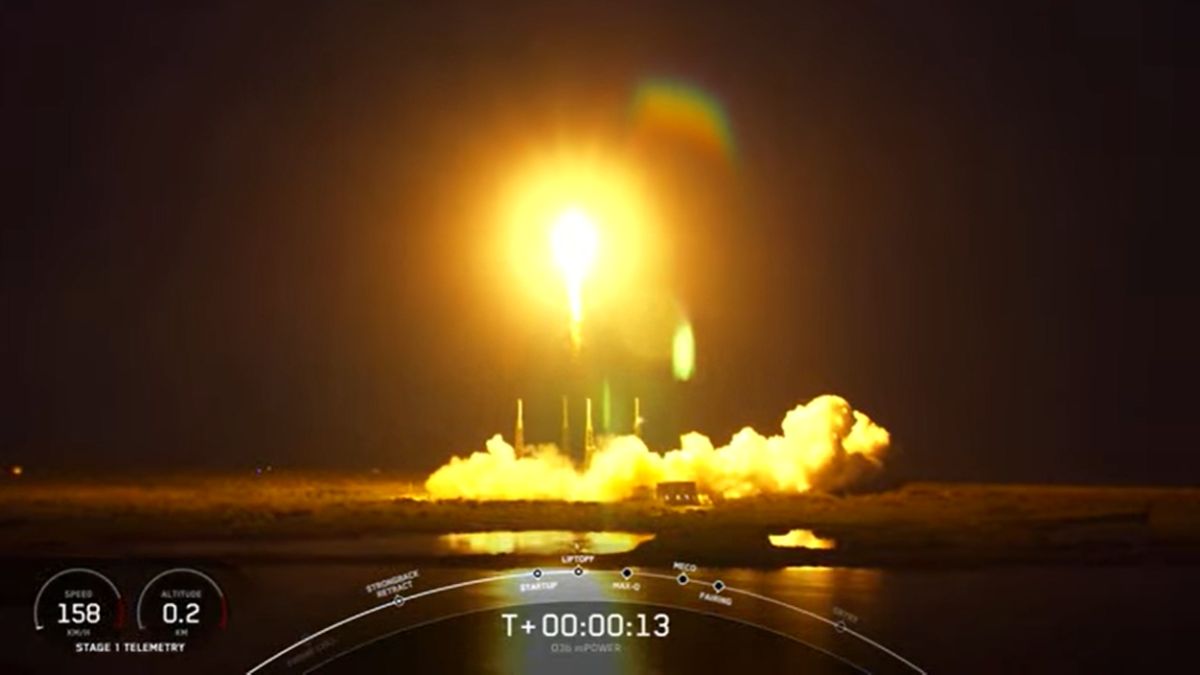New research shows that even smaller impacts can warm and soften enough ice on Jupiter’s moon Europa to send material sinking into the underlying ocean. This finding explains a new transport mechanism that could deposit important ingredients into the moon’s ocean. The icy shell of Jupiter‘s moon Europa is marked with craters, most of which are from small impacts that dent the moon’s surface but are not big enough to penetrate all the way to its underlying ocean. Now, researchers have shown that impacts that penetrate even halfway through the…
Read MoreMonth: December 2022
Superdense neutron star likely has solid crust, NASA telescope finds
The first-ever X-ray observations of a magnetar, a type of neutron star with the most powerful magnetic fields in the universe, have confirmed that these fields are polarized and indicate a solid surface with no atmosphere. Scientists used NASA’s Imaging X-ray Polarimetry Explorer (IXPE) space telescope to examine the magnetar 4U 0142+61, which is located about 13,000 light-years from Earth in the constellation of Cassiopeia. The X-ray observations represent the first time scientists have been able to confirm the theory that magnetic fields of magnetars are polarized. That conclusion also…
Read MoreNASA to Air Live Coverage of US Spacewalk for Solar Array Installation
NASA astronauts aboard the International Space Station will conduct a spacewalk on Wednesday, Dec. 21, to install a rollout solar array to increase electrical power in support of operations and scientific research.
Read MoreNASA, Moog SureFly Test Aircraft Noise
The Moog Surefly vehicle hovers above Cincinnati Municipal Airport in this photo from summer 2022.
Read MoreMammals were already poised to take over the world before the dino-killing asteroid struck
A Triceratops prorsus munches on plants while two small mammals sit in the underbrush. Nearby, a softshell turtle climbs up on a log, unaware that its ecosystem will shelter it from the impending doom of a major asteroid impact. (Image credit: Illustration © Henry Sharpe, used under license) Dinosaurs largely died off when a Manhattan-size asteroid slammed into Earth 66 million years ago. Meanwhile, in the shadows, tiny mammals had steadily picked up adaptations that helped them survive the disaster and thrive in its aftermath, a new study suggests. The…
Read MoreDoom-spiraling exoplanet will someday meet fiery demise
Like a golf ball circling a hole, the planet Kepler-1658b is getting closer and closer to falling in — into its star, that is. Scientists observing the exoplanet have noticed its orbital period around its mature or “evolved” parent star is shrinking over time, indicating that the planets inching closer to a fatal collision with its star. “We’ve previously detected evidence for exoplanets inspiraling toward their stars, but we have never before seen such a planet around an evolved star,” Shreyas Vissapragada, an exoplanet scientist at the Harvard and Smithsonian Center…
Read MoreScientists trace fireball to strange rocky meteoroid from the edge of the solar system
A rocky meteoroid that exploded over Canada last year was more extraordinary than it first seemed: it originated from the outer solar system, where scientists thought only icy bodies exist. A cavalcade of both professional and amateur astronomers caught images and videos of the meteoroid as it exploded over Alberta. By studying this data, researchers have determined that the meteoroid broke apart like a rocky object, surviving to deeper into Earth’s atmosphere than icy objects on similar trajectories do. However, the analysis also suggested that the meteoroid came from the…
Read MoreNASA cancels climate change satellite to monitor greenhouse gases
All good things must come to an end, nd in the case of NASA’s GeoCarb mission, some good things must end before they really begin. NASA has canceled the GeoCarb mission, which was a collaboration with the University of Oklahoma and Lockheed Martin that intended to put a greenhouse gas–monitoring satellite into geostationary orbit. GeoCarb would have measured levels of carbon dioxide, carbon monoxide and methane in the atmosphere about 4 million times per day. The mission was selected by NASA in 2016. “Decisions like this are difficult, but NASA…
Read MoreSpaceX rocket launch at sunset wows some stargazers with ethereal ‘space jellyfish’ (photos)
When SpaceX launch two satellites into orbit Friday evening from Florida, it lit up the night sky with more than just its fiery engines. The twilight launch of two commercial SES satelltes, called O3b mPower 1 and 2, on Dec. 16 created brilliant jellyfish-like plume in the night sky visible to lucky stargazers from hundreds of miles away. The satellites launched atop a Falcon 9 rocket that lifted off from Space Launch Complex 40 at the Cape Canaveral Space Force Station at 5:48 p.m. EST (2248 GMT) and was visible…
Read MoreSouth Korea’s 1st moon probe Danuri begins to enter lunar orbit
Danuri, South Korea’s first deep-space exploration mission, is finally arriving at the moon after a four-month voyage. The Danuri spacecraft was expected to begin entering lunar orbit at on Friday (Dec. 17) at 2:45 p.m. EST (1945 GMT, 2:45 a.m. Dec. 17 in South Korea), according to a statement (opens in new tab) from the Korea Aerospace Research Institute (KARI). The maneuver, the first of five planned engine burns through Dec. 28 to refine Danuri’s orbit around the moon, will clear the way for the probe to get started on…
Read More


